Climate & Environment
 Arctic sea ice has likely reached its minimum extent for the year and ties with 2008 and 2010 as the sixth lowest in the nearly 40-year satellite record.
Arctic sea ice has likely reached its minimum extent for the year and ties with 2008 and 2010 as the sixth lowest in the nearly 40-year satellite record. Ice loss detected in a Russian glacier has challenged scientists' assumptions about the stability of the cold ice caps dotting Earth's high latitudes.
Ice loss detected in a Russian glacier has challenged scientists' assumptions about the stability of the cold ice caps dotting Earth's high latitudes.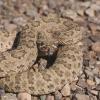 Hikers and trail runners be warned: Rattlesnakes and other venomous reptiles may bite more people during rainy years than in seasons wracked by drought, a new study shows.
Hikers and trail runners be warned: Rattlesnakes and other venomous reptiles may bite more people during rainy years than in seasons wracked by drought, a new study shows.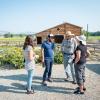 Side by Side is a community art and science event focused on barn swallows, a declining songbird species that nests exclusively in human-made spaces.
Side by Side is a community art and science event focused on barn swallows, a declining songbird species that nests exclusively in human-made spaces.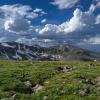 Degraded alpine ecosystems showed limited recovery years after long-term inputs of human-caused nitrogen air pollution.
Degraded alpine ecosystems showed limited recovery years after long-term inputs of human-caused nitrogen air pollution. Ozone levels higher across China than in other countries tracking the air pollutant, new NOAA/CIRES research shows.
Ozone levels higher across China than in other countries tracking the air pollutant, new NOAA/CIRES research shows.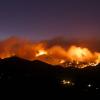 A new NOAA and NASA campaign investigates how the temperature of western U.S. wildfires affects the composition of their smoke.
A new NOAA and NASA campaign investigates how the temperature of western U.S. wildfires affects the composition of their smoke.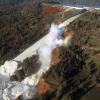 Flooding caused by rain falling on snowpack could more than double by the end of this century in some areas of the western U.S. and Canada due to climate change.
Flooding caused by rain falling on snowpack could more than double by the end of this century in some areas of the western U.S. and Canada due to climate change.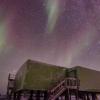 Researchers have found a link between gravity waves in the upper and lower Antarctic atmosphere, helping create a clearer picture of global air circulation.
Researchers have found a link between gravity waves in the upper and lower Antarctic atmosphere, helping create a clearer picture of global air circulation.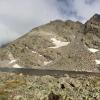 As plant communities become more diverse and complex in the high alpine, so, too, do soil microorganisms, according to new research at CU Boulder.
As plant communities become more diverse and complex in the high alpine, so, too, do soil microorganisms, according to new research at CU Boulder.


